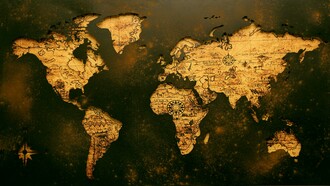Pakistan is facing a crisis in the current scenario; blue-collar workers are unable to purchase things as the situation is getting extremely difficult for the middle-class and below citizens.
The government relied on dollars to fund growth, and later Imran Khan came to power. The policy of overvalued exchange rate could go no further because the reserves were lower. Imran Khan’s party bowed to IMF for a $6 billion bailout. The IMF program was halted in 2020 due to COVID-19 and has seen many fluctuations.
Imports are now held at ports to expanse dollars, and this affected all purchasing items. Onions are held at ports as the payments are not cleared. A country that has a population of 230 million is now on the verge of default. The government needs a $1.1 billion loan from IMF.
The conditions imposed by IMF include raising the price of energy and taxes. Now, the government has announced a rise in the cost of items and utility taxes. The people are already unable to afford basic facilities of life, so overburdening them with new taxes can lower the quality of life. It can hurt the followers of PML (N). People are not going to buy through false promises.
Inflation has affected the daily lives of people; you can see people are suffering from malnutrition, and are unable to provide education to their children. Parents can’t afford school fees resulting in the dropout of children from school. Life has become so complex and unbearable for the common people.
The common man is worried about how he will be able to keep his family comfortable in a time of disaster. The people are facing anxiety and distress which is the situation of people all over Pakistan. The shipping containers are held up at ports, while the food and energy prices are skyrocketing. The prices of fuel and gas are increasing day by day.
The government of Sharif is under pressure to get dollars from emergency financing from International Monetary Fund. The government is resisting the changes asked by IMF, but for how long? The country is facing a balance of payments crisis; it is spending more on trade than it has brought in. Also, the country is facing a rampant increase in prices.
The floods last year have added to bills for aid and the construction of houses for people. This has added to the strain on the government. About $16 billion are needed to cope with loss and damage. Global conditions are making the crisis deeper for Pakistan. The economic crisis has impacted the exports of Pakistan, while the dollar prices have sparked.
IMF has warned that this could impact poor economies. The high levels of debt, slower growth, and high borrowing has impacted vulnerable economies, which include the ones with needs of dollar loan. The Sharif government came into power after a confidence resolution against Imran Khan’s government and accused the former of economic mishandling.
However, the situation has not improved so far. The present government blames the former which is the pattern followed by all people in power till now. Also, the country is facing a new series of attacks by militants. A mosque in Peshawar was destructed by a suicide attack killing about 100 innocent people. While the people are suffering in the intervening time; farmers have lost valuable crops in floods and need immediate help. About nine million people will be pushed into poverty this year as described by IMF. A man in Southern Sindh lost his life while looking for a bag of supported flour in a scramble.
So, the alarming situation has brought Pakistan to the spotlight once again. Overseas Pakistanis are also concerned about the situation in Pakistan, and many support Imran Khan’s government. We believe our country needs proper planning and fair elections for the next government. Things are getting hard for the common man in Pakistan, and earning a respectable living seems to get more challenging with time.














